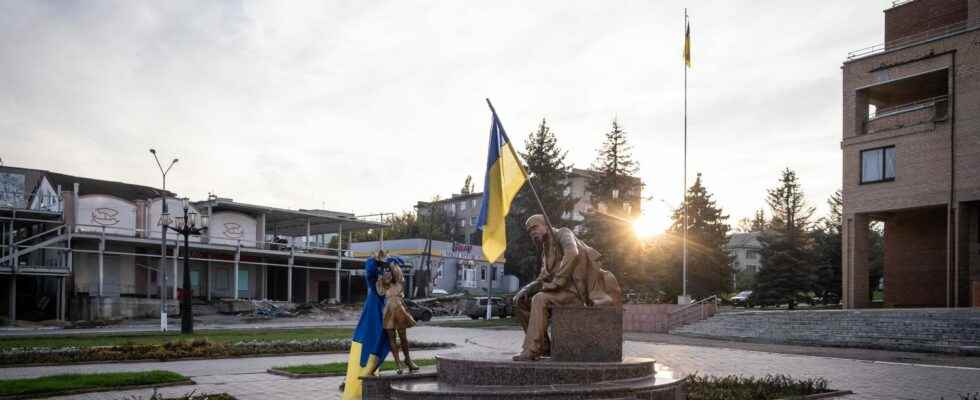Russian troops who had occupied Balakliya since March in eastern Ukraine had established their headquarters in a car repair center. The town was liberated by Ukrainian forces in early September. After the occupier left, thousands of pages of documents were discovered in the basement of the now-ruined building, Reuters news agency reported. (article in English), Wednesday, October 26. Reading them reveals the delicate situation in which the Russian army found itself during the Ukrainian lightning counter-offensive in the region.
NEW: We reviewed more than a thousand pages of Russian military documents left behind in a command bunker in Balakliia, Ukraine. The documents shed new light on Russia’s chaotic retreat from the Kharkiv area in Sept. Thread with some of our findings 1/x pic.twitter.com/iUmyKdGo6i
— Mari Saito (@saitomri) October 26, 2022
For the Russian forces in Balakliïa, things got complicated on July 19, when a column of Ukrainian soldiers attacked the village of Hrakove, near their base. They only obtained the retreat of their adversary thanks to the reinforcement of combat helicopters, but at the cost of heavy losses: 7 dead, 39 wounded and 17 missing, according to the report consulted by Reuters. Several Russian soldiers required treatment for “acute stress reaction”according to a medical file found on the spot.
The area was regularly targeted by Himars multi-rocket systems, supplied to Ukraine by the United States, which played an important role in the Ukrainian counter-offensive. Between late July and late August, Russian troops lost three of their five military drones, five of their eight armored vehicles and 18 of their 24 anti-tank weapons. “There were no supplies of ammunition or drones”commented a Russian officer found by Reuters.
In a daily situation update, at the end of July, a Russian officer had thus demanded Quadcopter drones, available on the internet or in stores. Three of them had arrived the next day, but without the software necessary for their use. The Ukrainian forces, for their part, benefited from a loophole, since two of the three Russian jamming devices were out of service, according to the section in charge of electronic warfare of Balakliïa.
At the end of August, and despite the recruitment of troops, the local manpower on the Russian side leveled off at just over 70% of the planned capacities, according to a spreadsheet consulted by Reuters. In addition, two units were operating with only about 20% of their strength, due to combat losses and desertions.. A handwritten note mentions in particular the case of a soldier who shot himself in the hand to escape the fighting.
In the city, the maintenance of order was entrusted in particular to the militiamen of the territory of Luhansk, who were less well endowed and paid. One of the separatist fighters suffered finger injuries in an accident with his Mosin rifle, an obsolete weapon that has long been out of production. In addition, the sergeants from the separatist forces received each month around 91,000 rubles (around 1,500 euros), according to an accounting document discovered in the bunker, against 202,000 rubles (around 3,300 euros) for their Russian counterparts.
Colonel Ivan Popov, of the 11th Baltic Corps, commanded Russian forces in the area, writes Reuters, and the base housed a detention center. But a commander was also responsible for monitoring the local population. He is accused of having himself supervised several interrogations of civilians in the city police station. They were beaten and tortured with electric shocks, according to testimonies from former prisoners collected by Reuters.
On September 6, the base was the target of Ukrainian strikes, which killed dozens of Russian soldiers. Two days later, the survivors finally left the scene “in chaos”, according to residents interviewed by Reuters. Some of the documents were set on fire during this hasty departure, some in an oven. The vehicles parked in a shed, too, went up in smoke.
Shortly after the liberation of Balakliïa, a team from France Télévisions managed to get to the city, taking side roads. She had observeda lot of gutted tanks, but also ammunition abandoned on the spot by the Russians”. The city was almost deserted, and partly destroyed. The Russian base, meanwhile, had to be cleared by Ukrainian forces. Aware of being in a precarious position on this front line, its former occupants had stuffed the place with explosives.
